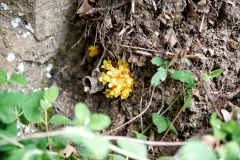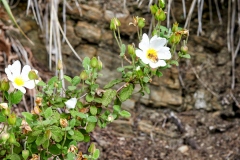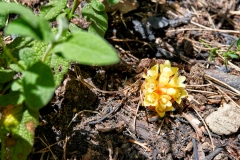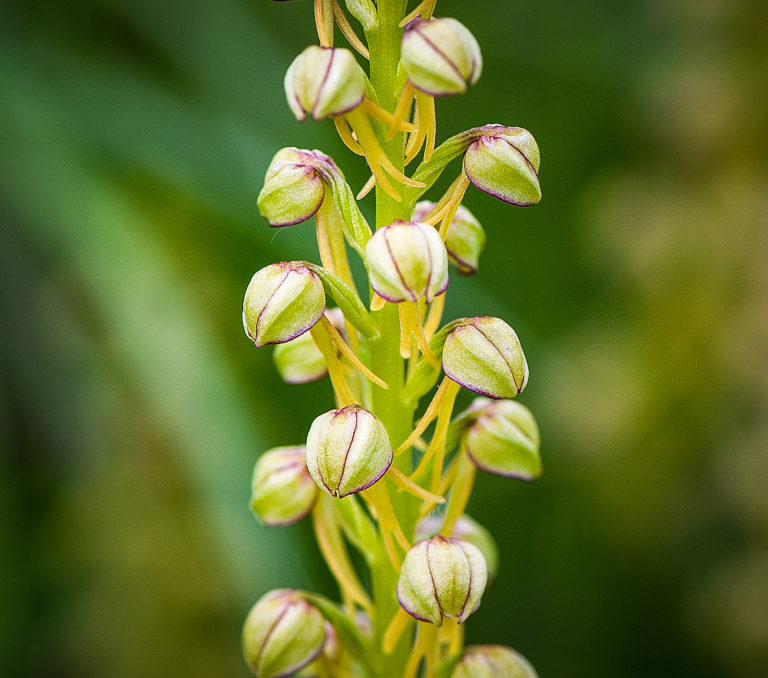Rocks, roses and parasites — a rose that’s not a rose
Rocks, roses and parasites or, to be more precise, rock-roses and a plant that parasitises them.
I might be stating the obvious but Cistuses, Helianthemums and the other rock-roses are not really roses at all. Their common name comes from a striking resemblance that the flowers of several species bear to wild roses, but they are actually members of the Cistaceae family.
Rocks, roses and parasites — a flower and nothing else
But this article isn’t about the rock-rose. At least not directly. It’s actually about a rather fascinating and unusual cousin of it — Cytinus hypocistis.
The first time you ever come across this plant you are likely to scratch your head and wonder what exactly you’re looking at. You might ask yourself whether it’s a succulent, or an algae, or a fungus. It is, in fact, a flowering plant and the only parts that are visible are its flowers (and potentially its fruit). The rest of the plant grows entirely within the root system of its host. Consequently, you are only likely to notice it during its flowering season (March to May).
Cytinus hypocistis is found throughout the Mediterranean area and is parasitic on members of the Cistus and Halimium genera. It is plentiful here in Tuscany, where its host is usually the sage-leaved rock-rose, Cistus salviifolius. Cytinus belongs to the Cytinaceae family. Consequently, it is a cousin of the rock-rose as they are both members of the Malvales order. I mention this to underline the point that Cytinus is parasitic on a plant that is a close relative.
Pollination
Its flowers are easy to miss because they grow directly from the host plant’s root system and are frequently hidden beneath it. Such a habitat prohibits wind-borne pollen so how does pollination take place? Studies have shown that the primary pollinators are ants. As you can see, there are ants on the flowers in the main image at the top of this page and in image five of the gallery below. The presence of ants acts as a deterrent to flying pollinators and points to ants providing some kind of advantage for the plant. Studies have shown that ants carry a greater pollen load than their competitors but is that enough to support a special relationship between plant and animal? The question becomes more difficult to answer when one factors in the known potential for the acids produced by ants to reduce the viability of pollen.
For the moment the exact relationship between ant and plant remains a mystery. But studies that are already underway will solve the puzzle in time.
Gallery
Notes: For those interested in entomology (insects), the second image includes a fruit fly, Campiglossa producta, and a European dark honey bee, Apis mellifera mellifera; the third image includes an Italian honey bee, Apis mellifera ligustica; the fifth image illustrates the close relationship between Cytinus hypocistis and ants; while the eighth image contains a hoverfly, Sphaerophoria scripta, on one of the potentilla flowers..
Parting shot
Nature loves irony. In the UK, the wildflower that goes by the vernacular name common rock-rose is Helianthemum nummularium, which is another member of the rock-rose family, Cistaceae. But, it would be difficult to win an argument that claims it looks similar to a rose. If it looks similar to anything, then that would have to be creeping cinquefoil, Potentilla reptans, or, perhaps, one of the other cinquefoils. And this is where the irony creeps in (pun intended). It’s not the helianthemum that’s related to the true rose, it’s the potentilla.












